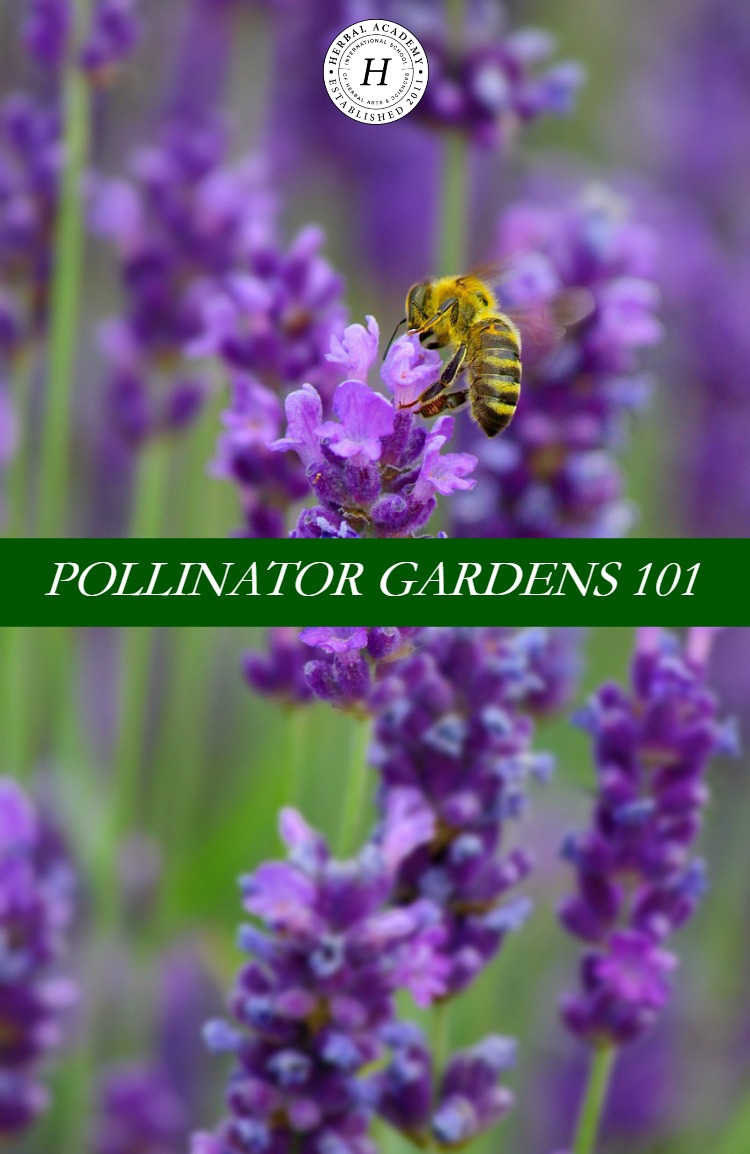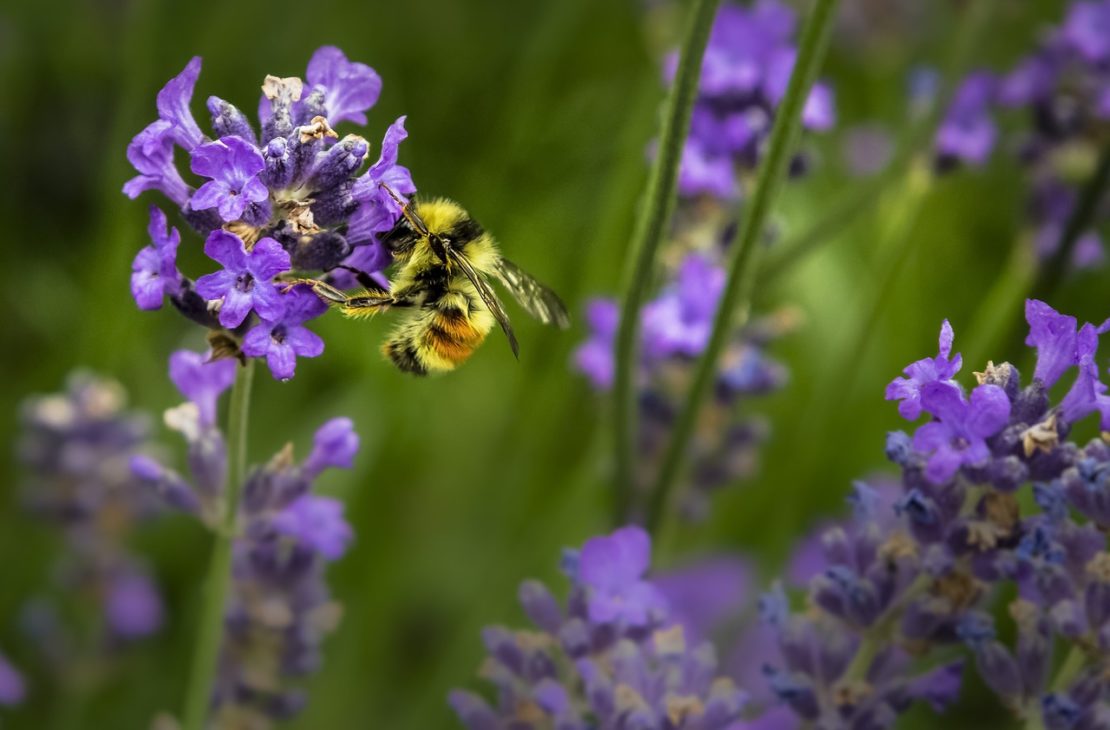
Pollinator Gardens 101: Helping Mother Nature
Have you noticed less bees buzzing around or a decrease in monarch butterflies in your area? What about a decrease in hummingbirds or moths? Our earth is in trouble, which puts us in trouble since we depend her pollinators for much of our food.
Today, I’d like to share some brief information with you about the importance of pollinators and how you can help them, our earth, and yourself by planting pollinator gardens around your home and in your community.
Who Are Our Pollinators?
So who exactly are these “pollinators” that are so good for us and our planet?
- Honey bees: Brought to North America in the 1600’s with the early colonists for pollinating their crops and of course, for the honey.
- Native bees: We have more than 4,000 different species. These include mason bees and bumblebees. One species of bumblebees was just added to the endangered species list in the last few months! Bumblebees fly in cooler weather and in less daylight than honeybees, giving them the ability to pollinate earlier and later in the day.
- Moths: When the sun goes down the moths come out and take over. Between all of the various pollinators, pollination goes on 24-7!
- Butterflies: Have you noticed their numbers dwindling—especially the monarchs? I have. I leave milkweed in my yard and wild areas hoping to entice them back.
- Flies: No not the common housefly—continue to swat them! These guys look like little bees. They’re classified as flies or midges, and they pollinate.
- Bats: Ok, I don’t care for them either, but they do help pollinate a lot of fruits. They also keep insects and bugs away from our crops, so they do their share as well.
Common Threats To Pollinators
Bees are required to pollinate over 70% of the world’s plants. The pollination enables them to produce seed, which is vital to their existence and to ours.
As humans grow our habitats, the pollinators see their world shrinking. Highways, housing developments, mega farms, golf courses, and huge new shopping centers are springing up all over. Many of these sites use pesticides. Hybrid varieties of plants may not be adequate for our pollinators.
Some pollinators communicate through sound. Noise pollution caused by construction and destruction of native habitat make it increasingly difficult for their communication.
Our pollinators are faced with an ecosystem filled with man made chemicals and GMOs. Their health, breeding, continued pollination and very existence is at stake.
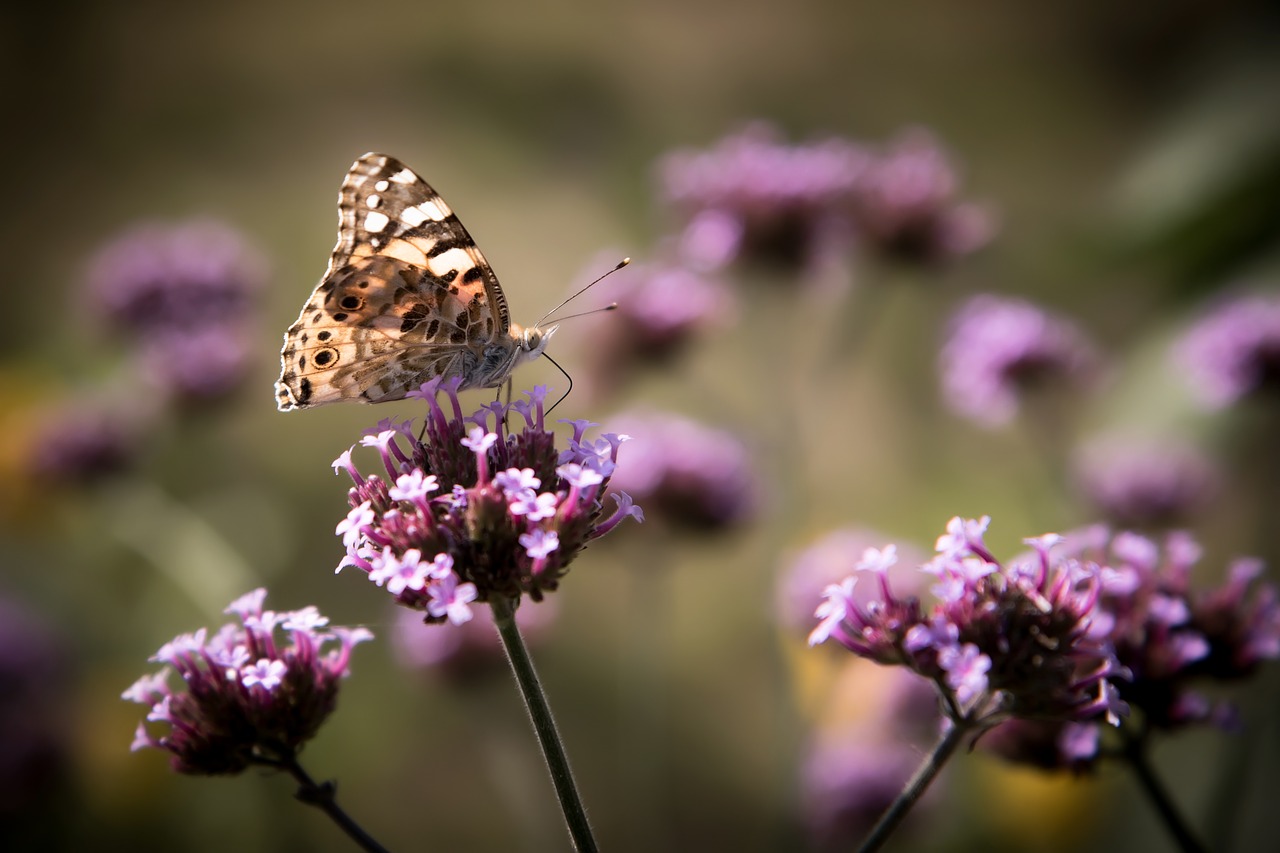
Help Out By Planting Pollinator Gardens In Your Local Area
Have you heard about the Million Pollinator Garden Challenge? If not, check out their website for more information on what is happening, how to plant a pollinator garden or area in your yard, and how you can register your garden and get a dot on their map! If you have a website you can also post their logo and information to help spread the word!
The goal of their campaign is “to register a million public and private gardens to support pollinators all over the country.” Look at their map on the website and see if there is a pollinator garden near you. They are striving for enough gardens filled with pollen rich plants to allow the pollinators a corridor for flying north in the spring and south in the fall.
The National Pollinator Garden Network is made up of gardening groups, both large and small all over the country. They actively support the Million Pollinator Garden Challenge’s strategy “Promote the Health of the Honey Bees and Other Pollinators.”
You can help by adding more legitimate pollinating plants in your herb and other gardens. It doesn’t matter how big your pollinator gardens are. Pollinators simply need enough areas to land so they are not stressed on their journeys. If we all do just a little more, we can help the bees and other pollinators, which in turns, helps us.
Once you have your pollinator gardens ready, take a picture and post it on the S.H.A.R.E. map on the National Pollinator Garden website. Any size garden can join their campaign to help reach the million gardens!
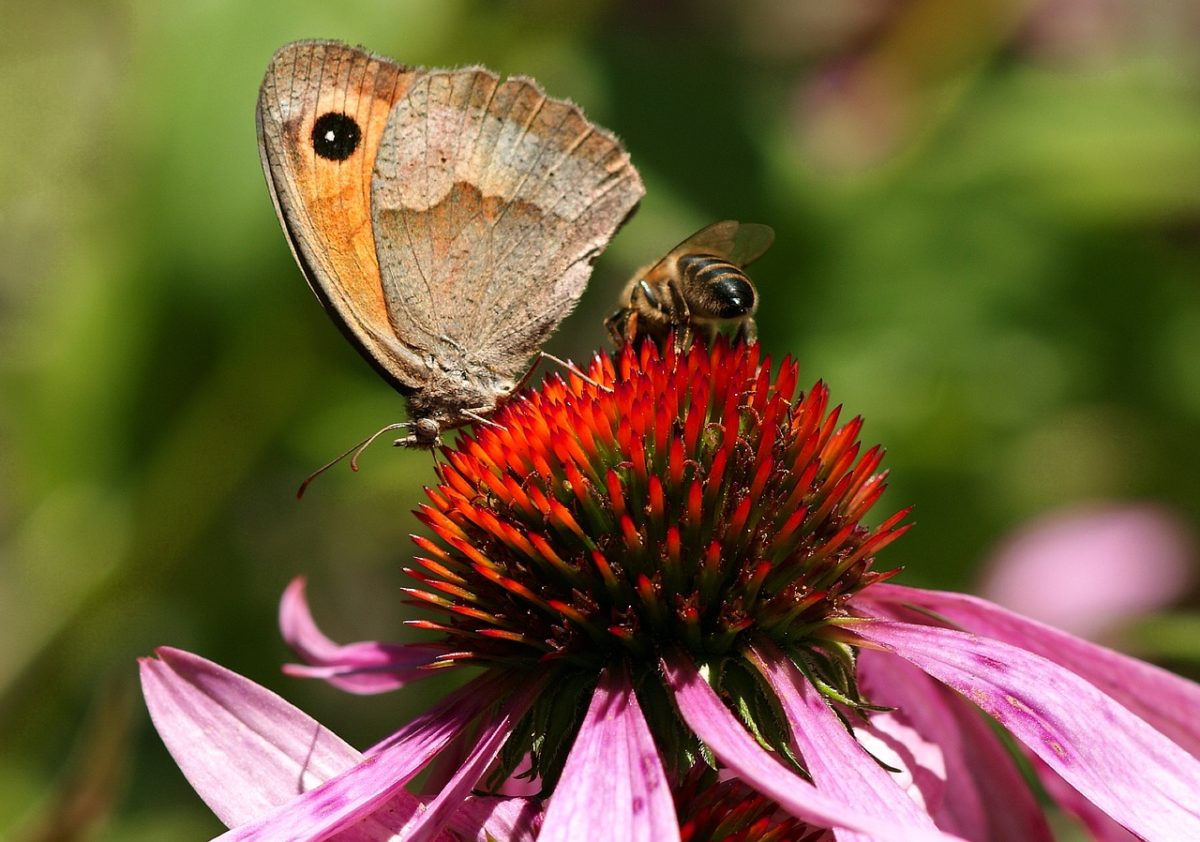
Plants To Include In Your Pollinator Gardens
Native and heirloom plants are a good choice for pollinator gardens, especially for the native bees, but try to avoid hybrids.
Here are some plant suggestions to get you started:
- Anise Hyssop (Agastache foeniculum)
- Swamp Milkweed (Asclepias incarnata)
- Common Milkweed (Asclepias syriaca)
- Butterfly Milkweed (Asclepias tuborosa)
- Purple Coneflower (Echinacea spp.)
- Blazing Star (Liatris pycnostachya or L. spicata)
- Wild Bergamot (Monarda fistulosa or didyma)
- Sedums (especially Stonecrop)
- Goldenrods (Solidago spp.)
- New England Aster (Symphyotrichum spp.)
- Mountain Mint (Pycnanthemium muticum)
- Highbush Blueberry (Vaccinium corymbosum)
- Globe Thistle (Echinops bannaticus)
- False Solomon’s Seal (Maianthemum racemosum)
- Foxglove (Digitalis)
- Lupines (Lupinum perennis)
- St. John’s Wort (Hypericum perfatorum)
- Serviceberry (Amelanchier spp.)
- American Witchhazel (Hamamelis virginianus)
If you’re planting trees, consider the following:
- Red Maple (Acer rubrum)
- Staghorn Sumac (Rhus typhina)
- Hawthorn (Crataegus spp.)
- Mountain Ash (Sorbus americana)
- Willows (Salix spp.)
- Wild Cherry (Prunus serotina)
- Linden (Tilia spp.)
Other common herbs (some perennials some annuals) to plant:
- Dill (Anethum graveolens)
- Parsley (Petroselinum crispum)
- Flowering Tobacco (Nicotiana spp.)
- Lemon Balm (Melissa officinalis)
- Lavender (Lavendula spp.)
- Chives (great for those early arrivals to pollinate) (Allium schoenoprasum)
- Borage (Borago officinalis)
- Pineapple Sage (Salvia elegans)
- Sage (Salvia spp.)
- Savory (both winter and summer) (Satureja spp.)
- Thyme (Thymus spp.)
- Mints (Mentha spp.)
If you google “pollinator plants,” you’ll find hundreds more!
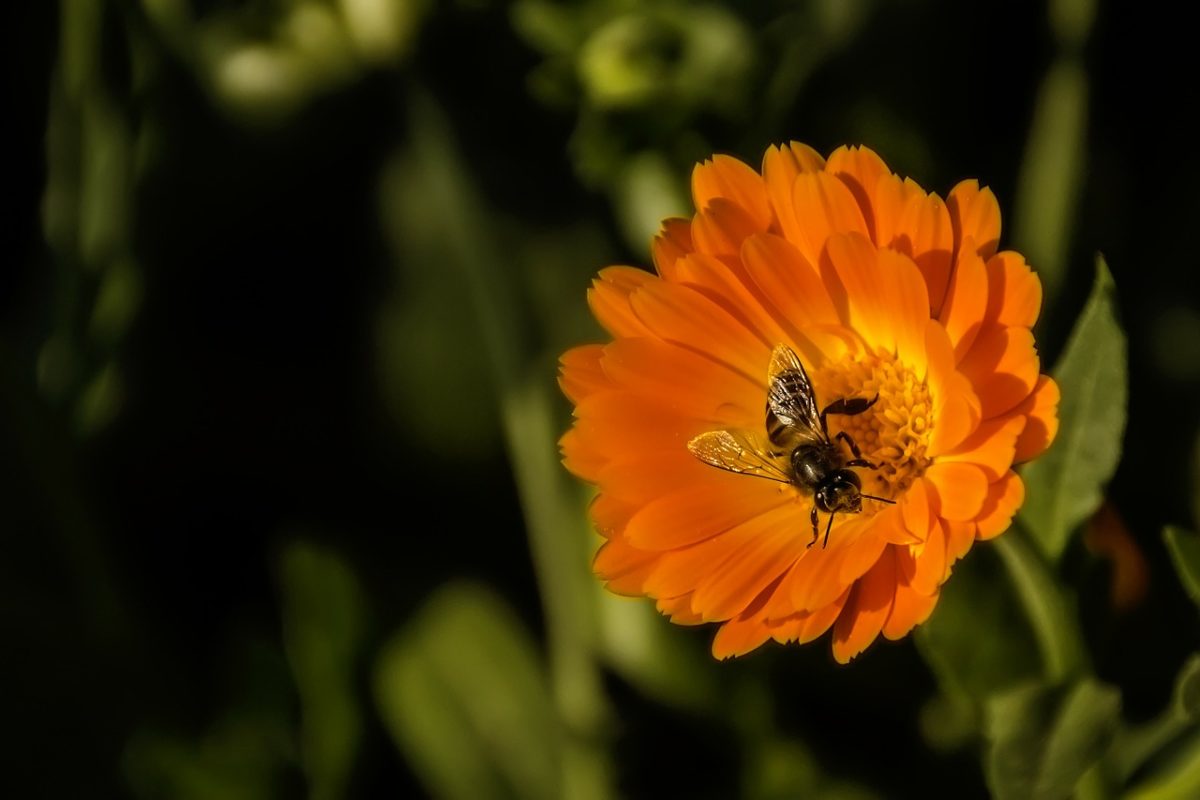
Tips For Your Pollinator Gardens
- Provide a water source but include a few large stones to keep them from drowning.
- Place your garden in a sunny area with wind breaks.
- Plant large groupings of the same plant—called “pollinator targets”. They’re easier to spot from the air and easier to go from plant to plant in small areas.
- Keep plants that bloom throughout the growing season. This helps pollinators at each stage of their lives.
- Have some early bloomers to help with spring feed needs as well as some late bloomers for late fall needs.
- Eliminate your use of pesticides.
- Have both single blooming flowers in the same areas with long blooming flowers.
- Here’s my personal favorite: Pollinators like unkempt gardens! Delay the fall cleanup until spring!
Colors
Here’s a basic color guide for pollinators (this is only a guide):
- Honey bees prefer white, yellow, and blue flowers.
- Moths prefer night blooming gray or white or silver fragrant flowers. (The type found in a “moon garden”.)
- Butterflies prefer red, orange, yellow, and purple flowers.
- Flies prefer striped flowers and less showy flowers. (This makes them less likely to be seen by their predators.)
Plants to Avoid
- Rhododendron – nectar is toxic to bees. The honey produced is unsafe for humans. (Alternate – Clematis)
- Azaleas – toxic to bees. (Alternate – Foxgloves – the honey is ok)
- Trumpet Flower or Angel’s Trumpet – nectar can cause blood death in bees.
- Stargazer Lily – pollen is poison to bees. (Alternate – Hollyhocks)
- If you are seriously planting for pollinators only, ensure it is not toxic before purchasing.
This should give you enough information to get you started, but feel free to check out this article for more information on creating a pollinator garden. And don’t forget the Million Pollinator Gardens Challenge and consider registering your garden. There are many botanical, prairie, and other public gardens included on the Challenge list. Visit some of them to get more ideas and see what plants you might prefer in your gardens.
